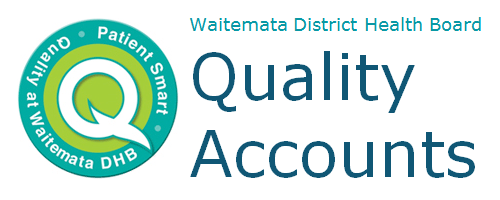
Allied Health clinicians are health care professions distinct from nursing, medicine, and pharmacy and they form part of the hospital multi-disciplinary team that care for patients. At Waitemata DHB the Allied Health clinicians are based in their own departments and not allocated to sepcific wards or units.
Staffing levels across our wards can very daily due to vacancies and leave and there was no visibility of allied health staffing capacity each day across both the North Shore and Waitakere Hospital sites.
The Allied Health team also had no single communication strategy to communicate capacity across each inpatient wards. Team leaders would email charge nurse managers with any significant capacity concerns as they occurred.
Allied Health clinicians would then communicate workload requirements via meetings and cells phones to reallocate resources according to clinical need and priority of each patient.
What are we trying to achieve?
Capacity at a Glance (CAAG)
Capacity at a glance (CAAG) is an electronic board displaying information about bed availability on our inpatient wards, Elective Surgery Centre (ESC), Emergency Departments and Assessment & Diagnostic Units (ADU). CAAG boards give an overall view of bed availability however there is minimal patient information.
The CAAG boards are colour coded for the specialty (eg surgical, medical) that the patient has been assigned to. Each block displayed represents a bed that is available on a ward. The empty or white blocks for each ward are available beds.
Using this technology as a base the Allied Health team wanted visibility of the CAAG Boards so that each day they can see allied health staffing capacity, and where Allied Health staff are needed within the hospital. This will help the Allied Health team to prioritise their workload and ensure patient care and assessments are completed.
The tool uses a traffic light system with green showing standard staffing through to red indicating a critical care capacity deficit. Variance indicators guide a consistent and transparent approach to defining capacity and will help us streamline and integrate the service provided to our patients.
What have we done?
The allied health capacity at a glance tool has been developed through two separate "pen and paper" trials to determine the appropriate variance colour indicators.
This was achieved manually using spreadsheets and creating the view and emailing out the information to the allied health teams on a daily basis.
Extensive consultation was undertaking with key stakeholders including all allied health disciplines and nursing groups.
Where to from here?
The Allied Health CAAG tool has been successfully trialled with an immediate improvement in the communication and management of allied health capacity on a daily basis across both hospital sites. Staff have also found the tool to be very informative and clear.
The electronic Allied Health CAAG tool is now under development and will be live in due course.
Allied Health Roles
Dietitian (DT)
- A dietitian (or dietician) is an expert in dietetics; that is, human nutrition and the regulation of diet
- A dietitian alters their patient's nutrition based upon their medical condition and individual needs
- Dietitians are regulated healthcare professionals licensed to assess, diagnose, and treat nutritional problems
Needs Assessment Service Coordinator (NASC)
- Every person who wishes to receive disability support services funded by a DHB must be needs assessed by a needs assessment service coordinator (NASC)
- The information from the assessment is then used to determine the level of need the person has – very low, low, medium, high or very high
Occupational Therapist (OT)
- An occupational therapist applies their specific knowledge to enable people to engage in activities of daily living that have personal meaning and value
- Occupational therapists develop, improve, sustain, or restore independence to any person who has an injury, illness, disability or psychological dysfunction
Physiotherapist (PT)
- A Physiotherapist helps people affected by injury, illness or disability through movement and exercise, manual therapy, education and advice
- Physiotherapists maintain health for people of all ages, helping patients to manage pain and prevent disease
Speech Language Therapist (SLT)
- A speech language therapist provides treatment, support and care for children and adults who have difficulties with communication, or with eating, drinking and swallowing
Social Worker (SW)
- A social worker helps patients solve and cope with problems in their everyday lives that maybe impacting on their medical condition and recovery
